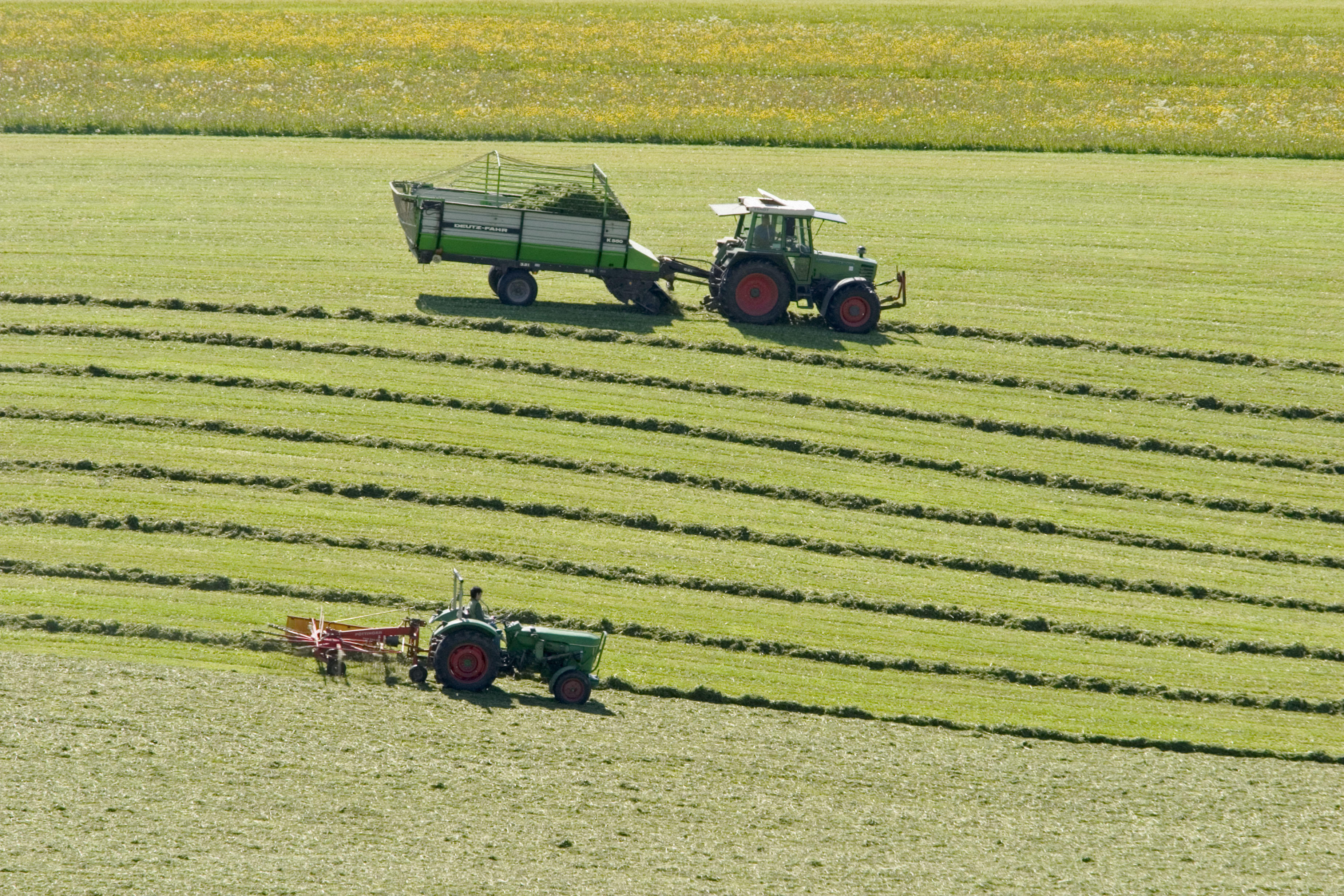Hay consists of the dried stems and leaves of plants, and serves as feed for cattle, horses, and other animals. Hay is most often made from a legume, such as alfalfa or clover, or from a forage grass, such as orchardgrass, smooth brome, or timothy. Hay commonly consists of a mixture of legumes and grasses. In some areas, farmers make hay from wild prairie grasses.

Farmers have traditionally cut hay with a sickle mower and left it on the ground to dry. A machine called a conditioner crushed the hay, which reduced the drying time. Farmers then raked the hay into long rows called windrows and allowed it to dry further. Today, many farmers use a machine called a swather that cuts, conditions, and windrows hay in one operation.
Farmers take great care to dry hay properly before storing it. Hay that contains too much moisture will spoil. In addition, as the damp hay spoils, enough heat may be created to start a fire. A mechanical dryer can speed the drying process and prevent the hay from getting wet when it rains. However, mechanical drying is costly, and so it is rarely used.
After the hay has been cut and dried, farmers use special machines to prepare it for storage. Some farmers use baling machines that gather the hay into rectangular bales weighing from 50 to 150 pounds (23 to 68 kilograms). The balers then tie the bales with wire or twine. The farmer stacks the bales onto a wagon by hand or by means of automated equipment. The wagon transports the bales to barns or outdoor storage areas.
Other farmers store hay in large round or rectangular bales that weigh from 1,000 to 2,000 pounds (455 to 910 kilograms). These bales are tied with heavy plastic twine and moved with equipment mounted on a tractor. To keep rectangular bales dry, farmers may cover them with loose hay, plastic, or canvas. Round bales can be stored uncovered because they shed water better.
Machines called haystackers compress hay into large loaves that weigh from 2,000 to 16,000 pounds (910 to 7,300 kilograms). Other machines then unload the loaves in the storage area.
Sometimes, farmers choose to chop the hay before storing it. In this case, a forage harvester cuts the hay into short pieces and blows it onto a wagon or truck. Farmers can store chopped hay in barns or process it into small wafers or cubes.
